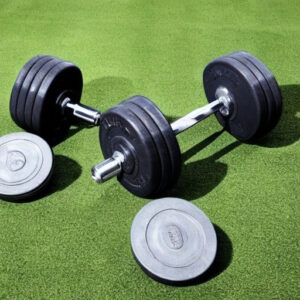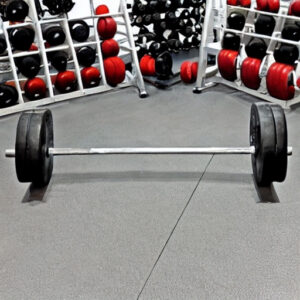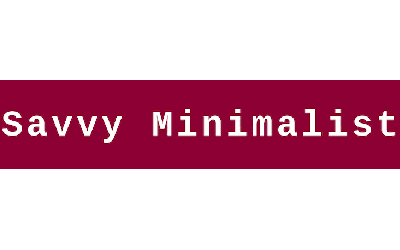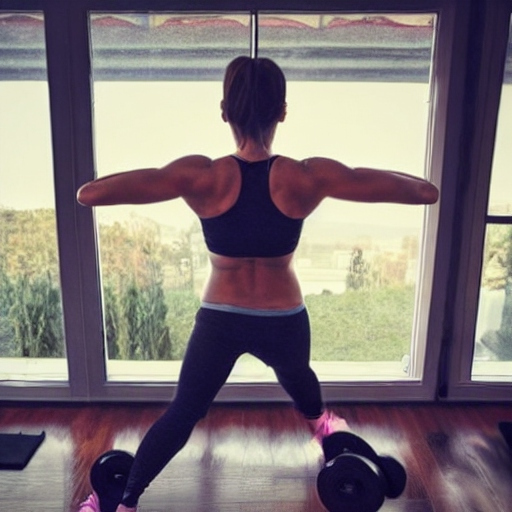Going to the gym can be a hassle. Exercising at home can be a more convenient option for you. Not only do you save money but you save time from having to commute to the gym. In this article I want to share how you can easily start exercising at home and everything you need.
Why start exercising at home?
Convenience: Working out at home can save you time. You will have to make time to go to the gym. This can be difficult for some people that are on a tight schedule. The option to work out at home will help you get your exercise in without dreading making it to the gym.
Privacy and Comfort: Exercising at home provides a level of privacy and comfort that may be lacking in a public gym setting. You can work out in your own space, wearing whatever you feel comfortable in, without feeling self-conscious or judged by others.
No Waiting for Equipment: Gym congestion and waiting for equipment can be frustrating and time-consuming. When you work out at home, you have unrestricted access to your equipment, allowing you to complete your workouts more efficiently.
Greater Focus and Consistency: Eliminating the distractions of a busy gym environment can help you stay focused and committed to your workouts. You’re more likely to stick to a consistent exercise routine when you can do it in the comfort of your own home, leading to better long-term results.
Why start exercising at the gym?
Working out at the gym have it’s benefit. The option for more equipments and larger space. If you want to work out in groups or enjoy other people around.
Access to Equipment: Gyms typically offer a wide variety of exercise equipment, including cardio machines, strength training machines, free weights, and functional training equipment. This variety allows gym-goers to perform a diverse range of workouts targeting different muscle groups and fitness goals.
Professional Guidance: Many gyms provide access to certified personal trainers who can offer guidance, expertise, and personalized workout plans tailored to individual needs and goals. Trainers can help beginners learn proper exercise techniques, prevent injuries, and optimize their workouts for maximum effectiveness.
Social Interaction: The gym can be a social hub where individuals can meet like-minded individuals, make new friends, and form workout buddies or support networks. Engaging in conversations and sharing experiences with other gym-goers can enhance the overall exercise experience and contribute to a sense of community.
How much space do you need?
As a minimalist you likely will have space available to you. Depending on your goal, you don’t need lots of equipments to work out.
If you live in a house, you have more option for space. If you have an extra room, attic, basement or garage, you can choose an area to set up a home gym. You have more space for certain workout equipments such as a Treadmill or a Bowflex machine.
If you live in an apartment your space might be more limited. I currently live in a one bedroom apartment and I chose the room to workout. I opt to only use dumbbells, one small barbell and a pull up bar.
Here’s what you can do with those equipment.
Dumbbell

You can choose adjustable dumbbell so you can add more weight. It’s relatively easy to store these in a closet after using them.
Barbell

These don’t have to be the large kind. You can use the 4 feet version or an EZ curl bar. These can be used with additional wright as well. Can be dismantled and store easily.
Pull up bar.
There are two kinds of pull up bar you can use. One that goes between a hallway or one that can hang from your door’s entry way. Some of these don’t have to be taken down and won’t take up space.
What kind of workout can you do?
There are many different kind of workout you can do. Here are some of my favorite you can try.
Pushups (Close grip)
Pull-ups (Close grip underhand and overhand)
Bent over row with barbell (Underhand)
Dumbell squats
Dumbbell lateral raise
Overhead tricep raise with both Barbell and dumbbell
How you can save exercising at home?
Gym Fees
- Gym membership fees varies depending on the location, type of gym and membership plan (monthly or annual).
- According to a survey by Statista, the average monthly gym membership fee in the United States was approximately $58 in 2020.
- Over the course of a year, this amounts to $696 in gym membership fees on average.
Equipment Costs for Home Workouts:
- Purchasing exercise equipment for home workouts can range from inexpensive items like resistance bands and dumbbells to larger, more costly equipment like treadmills and elliptical machines.
- According to HomeAdvisor, the average cost of setting up a home gym with basic equipment ranges from $1,000 to $10,000 or more, depending on the quality and quantity of equipment purchased.
- However, it’s possible to start with minimal equipment and gradually invest in additional items over time as needed.
Other Expenses:
- Additional expenses associated with working out at the gym may include transportation costs (e.g., gas, public transit fares), workout attire, locker rental fees, personal training sessions, and amenities like smoothie bars or childcare services.
- These expenses can vary depending on individual preferences and circumstances.
Savings Breakdown:
- To calculate potential savings, subtract the cost of gym membership fees from the cost of setting up a home gym and any additional expenses associated with each option.
- For example, if you spend $1,000 on basic home gym equipment and anticipate minimal additional expenses, your savings in the first year compared to a gym membership averaging $696 annually would be approximately $304.
- Over time, the savings from working out at home can increase as you avoid ongoing gym membership fees and have the opportunity to invest in additional equipment or amenities for your home gym.
Sources:
Statista: https://www.statista.com/statistics/236123/average-annual-gym-membership-cost-in-the-us-by-region/
HomeAdvisor: https://www.homeadvisor.com/cost/sports-and-fitness/home-gym/
Conclusion
Working out at home can save you a lot of money. This option is convenient and works if you have a busy schedule. All you need is some space and few equipments that are affordable. Get started today and enjoy a healthy lifestyle.
FAQ:
Q: What equipment do I need for exercising at home?
A: The equipment you need depends on your fitness goals and preferences. You can start with minimal equipment like resistance bands, dumbbells, a yoga mat, and a stability ball. As you progress, you may consider adding items like a jump rope, kettlebells, or larger equipment such as a treadmill or stationary bike.
Q: How do I stay motivated to work out at home?
A: Staying motivated at home can be challenging, but setting specific goals, creating a workout schedule, varying your workouts to keep them interesting, and finding a workout buddy or online community for support can help. Also, consider rewarding yourself for reaching milestones or completing workouts.
Q: How do I find online workout videos or programs?
A: There are numerous online platforms offering workout videos and programs for various fitness levels and goals. YouTube, fitness apps, streaming services, and fitness websites often provide a wide range of options, including cardio, strength training, yoga, HIIT, and more.
Q: How do I create a home workout routine?
A: Start by determining your fitness goals and assessing your current fitness level. Then, choose exercises that target different muscle groups and incorporate cardiovascular, strength training, and flexibility exercises into your routine. Be sure to include warm-up and cool-down periods and gradually increase intensity and duration as you progress.
Q: Can I replace cardio workouts like running or cycling with at-home alternatives?
A: Yes, there are many cardio exercises you can do at home, such as jumping jacks, high knees, burpees, jump rope, and stair climbing. You can also use cardio machines like treadmills, stationary bikes, or elliptical trainers if you have them available.
Q: Are there any safety considerations for exercising at home?
A: Yes, safety is important when exercising at home. Make sure your workout space is clear of hazards, use proper equipment and footwear, stay hydrated, listen to your body, and stop exercising if you experience pain or discomfort. If you have any health concerns or medical conditions, consult with a healthcare provider before starting a new exercise program.
Q: How can I ensure proper form and technique when exercising at home?
A: Proper form is essential for preventing injuries and maximizing the effectiveness of your workouts. To ensure proper form, watch instructional videos, mirror your movements, focus on alignment, start with lighter weights, and listen to your body. Consider consulting with a fitness professional for personalized guidance.

